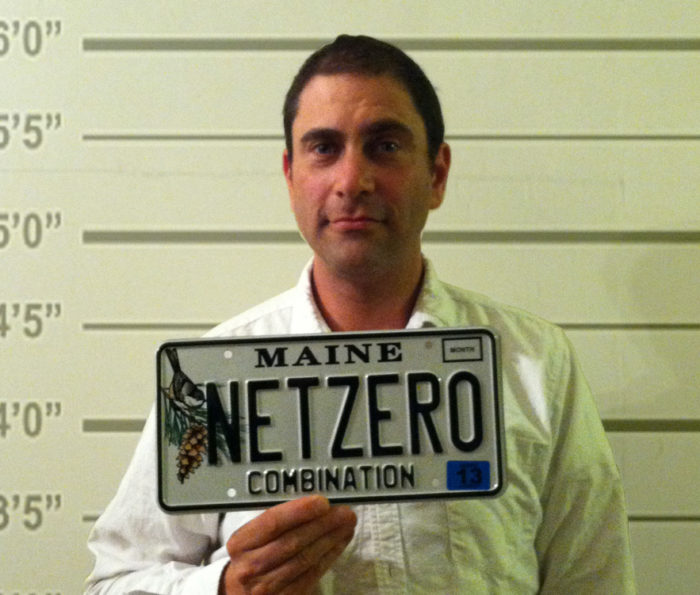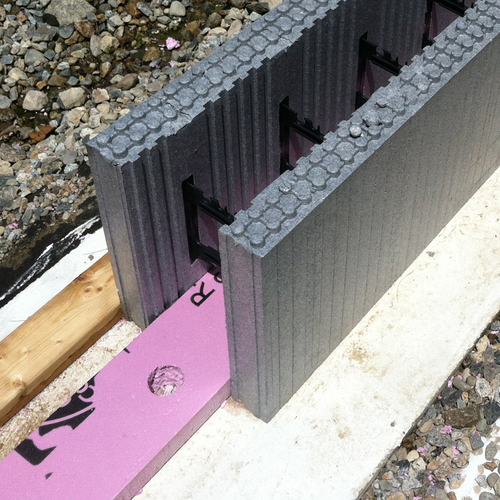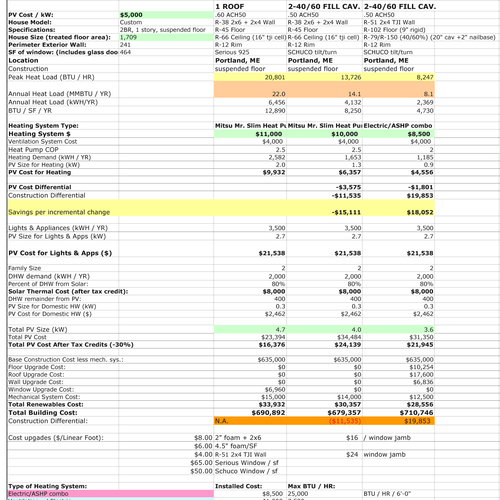Not too long ago, our own Jesse Thompson (known for his “What’s Bothering Jesse?” segment on the Green Architects’ Lounge) wrote a great article, PV Systems Have Gotten Dirt Cheap. It was a wakeup call for many.
Right now, in many states, it’s actually cheaper to get your electricity from the sun than from your local power utility. Really. So why isn’t this fact being shouted from the mountaintops? Why isn’t everybody putting up PV arrays? Because the equations are not that straightforward.
Most of us need to finance our projects. If you’re going to get your electricity from the sun, in most cases you’re going to take out a loan (at, say, 5% annual interest) and buy 30 years’ worth of electricity all at once. And that feels like a lot of money.
So Phil and I decided it was time to slowly sip some summer cocktails and talk through the decision-making process. In Part 1 of this episode we talked about figuring out how big a PV array you need and how much electricity it will provide. Now we have to deal with what approach makes the most economic sense and deciding at what point pragmatism starts to turn into altruism.
The Highlights:
News we should shout!: In many states, solar electricity is actually cheaper than buying it from your local utility company.
Solar Optimization Spreadsheet: This Solar Optimization Spreadsheet is a simple tool to help you compare the cost of solar electricity with that of a utility company. (Local information is required.) We’ve also included a State Electricity Cost Spreadsheet from the EIA to help you in case you are unsure of your actual rates.
Organic bananas: No, it’s not another cocktail, but a metaphor for the “extra” cost of solar. How much MORE would you pay for organic bananas over your “regular” bananas?
Trends: Petro-fuel costs are on a pretty steady incline of 2.5% annually, while solar electricity is on a fairly steady decline of 7%. Solar is inevitable, baby.
Politics: I’m afraid it’s a bit unavoidable at the moment. Phil and I hate talking about it, so we keep it very brief, but there’s one party that believes in global climate change and in acting on our knowledge and one that values willful ignorance as a virtue and would like very much to remove the current incentives we have from now until 2016.
The 30% incentives are working: One reason solar has gotten so competitive so quickly is that these financial incentives for renewables are working. We are, as a nation, beginning to smartly invest in future technologies.
Are we embarrassed yet? Phil and I ponder why we are so far behind European nations in their embracing and investing in PV.
Song of the Episode: Phil shares a song you should add to the office playlist. It’s Beachwood Sparks from their Tarnished Gold album playing “Earl Jean.” Enjoy!
Official Transcript
Chris: Hey, welcome back, everybody. Chris Briley here, host of Green Building Advisor’s … Green Architects’ Lounge …
Phil: Took you a minute, didn’t it?
Chris: It did! I was like, “Green something …”
Phil: We’re still Green Architects’ Lounge.
Chris: And that’s my co-host, Phil Kaplan.
Phil: This is Part 2 of our podcast on PV.
Chris: I’m calling this one “Enter the Dollar.” We’ve covered PV and what all that entails, and now we’re adding the dollar equation to it. I was going to have Jesse in because he’s sort of the whistleblower on GBA for how cheap solar is.
Phil: Right, he wrote a guest blog called “PV Has Gotten Dirt Cheap.”
Chris: It was great, got lots of hits, and was a real wakeup call for everybody. Basically, if you buy PV—not finance it, but pay for it with cash—the power that you pay for from the sun is cheaper than the power you buy from the grid here in Maine. Shouldn’t everyone be screaming about this wakeup call? Instead, it’s a whisper.
Phil: I think a lot of it is because people don’t have that cash right now. Even though PV is pretty cheap—below $4,000 per kilowatt, pretty cheap, and the prices are dropping pretty fast—even still, most people have to finance that. In Maine we’re paying 13 to 16 cents per kilowatt hour. With all the incentives, when you buy PV, you’re paying 9 cents a kilowatt hour. The problem is that most people still have to finance PV.
Chris: Exactly. It’s part of the financing of your house. So you end up paying 5% more for PV. Maybe now is the time to pull out the solar cost optimization spreadsheet.
Phil: This is part of Jesse’s brilliance. He’s a whistleblower and he put this spreadsheet together because he sensed what was going on.
Chris: One guy with a microphone saying “Hey, you gotta believe me” doesn’t resonate like someone saying “Hey, you gotta believe me. Look at this.” If you’re on GBA, download the spreadsheet. If you’re not, we’ll talk you through it.
Phil: In the last episode, we talked about average kilowatt-hour use per year.
Chris: Let’s round it off to 11,500 kilowatt hours. That goes on row 14 of the spreadsheet—what we’re looking to generate, 100% PV. The PV system size would be about 8.6 kilowatts. Column A is for paying cash. Column D is for financing over 25 years.
Phil: So, we would be paying $153 per month to the utility company. If we could pay cash for PV, we would be cutting that down to $90 per month, assuming the incentives, the tax credits, are in place. So, right now, you’ve got over $62 a month in savings if you’ve got the cash to do PV. Why not do it?
Chris: Rich people should be putting solar on their houses right now!
Phil: But what about you and me?
Chris: We’re going to have to borrow money.
Phil: What about the 99 percent? Let’s walk through this scenario. Financing at 5% for PV, we would pay $227 a month. That’s more than the $153 a month we pay to the utility company. But with incentives in place, that $227 for PV goes down to $159 a month. So, we’re comparing $153 to $159—$6 more a month for PV.
Chris: So, at a 5% interest rate, I’ll just be paying $6 more for PV than I pay to the utility company?
Phil: That’s right.
Chris: The question is, am I willing to pay $6 more a month for clean energy than for dirty energy?
Phil: That’s a good question.
Chris: Are you going to tell me about your bananas? When we were outlining this show, trying to figure out how we’d talk about cost and PV, Phil said he would tell me about organic bananas. OK, Phil!
Phil: Well, you walk in the store and see regular bananas and organic bananas. They look the same and kind of taste the same. But one is 69 cents and the other is 89 cents a pound.
Chris: I’m going to buy the 89 cents ones because they have a little organic sticker on them.
Phil: Are you? Because they make you feel a little bit better.
Chris: If the difference were 67 cents and $89, well…
Phil: Right, I wouldn’t buy PV in Louisiana, for example, because of the difference in the cost of electricity.
Chris: The metrics aren’t the same as they are here. If the organic bananas cost the same, I’d get them. If they’re 10 cents more, I’d get them. If they’re $2 more, well…
Phil: In some parts of the country, like here in Maine, we pay 16 cents a kilowatt hour. If you’re financing PV at 5% over 30 years, you’re paying 17 cents a kilowatt hour. But guess where the cost of electricity is going?
Chris: I have stats, my friend. Your petro fuels are on a steady incline. If you take the past three or four decades, there is about a 2.5% annual cost increase. Solar PV is going down, about 7% annually. There’s no reason to believe those trends won’t continue. Sure, there’s fracking. Sure, PV technology might level out. But I don’t think so. Then, it is inevitable…
Phil: We’ve got 7% in one direction and 2.5% in the other direction. For instance, the cost of electricity in 20 years in Maine is going to go up from 16 cents a kilowatt hour to 30 cents.
Chris: And where’s PV going to be? Lower.
Phil: Of course, the incentives may drop away at some point.
Chris: Well, we have them until 2016 at least.
Phil: That depends on who is elected.
Chris: True. If you’re conservative and are electing conservatives, chances are you won’t have those incentives anymore.
Phil: We don’t need to get political here. Just the facts…
Chris: Solar is inevitable. You’d rather be the smart guy advancing this stuff than the guy who is a decade behind, trying to catch up.
Phil: If you’re in Connecticut, you ought to be fist-pumping right now. They pay 19 cents a kilowatt hour already, and New York is closing in.
Chris: California is in the 13 to 14 cents territory.
Phil: In Hawaii, you buy electricity before food.
Chris: It’s 21 cents a kilowatt hour.
Phil: So give me some low states, Chris.
Chris: Basically, the middle of the country.
Phil: Washington is a controversial one. I’d like to hear from people in Seattle who have PV. Tell us why; make the case.
Chris: They have low solar yield and real low electricity rates, but they still do PV.
Phil: They are on board with Spain and Germany—countries that are still doing this when they have similar outputs to Seattle.
Chris: It’s really depressing to see people in the Unites States argue and fight about this when there are countries who started doing PV a decade ago. We need to get on board and start investing in the infrastructure, so communities can invest as well. By the way, solar has gotten cheaper, faster, in part because of the incentives. It’s working.
Phil: Here’s the question: Are we embarrassed yet?
Chris: I’m embarrassed.
Phil: Me too.
Chris: Europe is having financial catastrophe, and they’re still ahead of us and still of the mind that PV is a wise investment and that’s where new technology should be developed.
Phil: Let’s talk about some important websites. Dsireusa.org.
Chris: Spell it right. Lord knows what happens if you don’t. But this is a good site; it’s a national database and always has the new rebates right away.
Phil: Another one is NREL.gov, from the National Renewable Energy Laboratory. It has the PV Watts calculator. That’s how you can find out the solar output of your city.
Chris: One local company we’ve worked with, Revision Energy, has a simple solar calculator on its website. You can put in what you spend on energy, what you’d like to offset, and it fills in the rest—what your solar energy would cost, what you’d save, all that stuff. If data makes your eyes glaze over, this calculator will give you bare bones, large ballpark numbers.
Phil: On Green Building Advisor, Martin Holladay has written an excellent article.
Chris: Along with Jesse’s article. Be sure to check out all the links in this blog.
Phil: I just want to add, don’t fret about the roof space on your house. As architects and designers, we know the rules and we know when we can break them.
Chris: That goes for roof pitch as well. The perfect solar angle is not really your latitude. You want to be a little bit lower, because the sun is so powerful. Don’t get hung up on that. Play with a few degrees one way or the other, and you’ll only lose efficiency by a couple of percent. Don’t say, “I’m 20 degrees off of true solar south, so I can’t do PV.” That’s a copout and you deserve to be spanked.
Phil: The only time we want to use ridiculous angles is because we think the building looks cooler that way. It’s called architectural conceit, and sometimes it makes the building look better.
Chris: It does. But we like having reasons for that; not just that it’s cooler.
[The episode closes with a song by Beachwood Sparks, off their “The Tarnished Gold” album.]
PV-cost-calculation-spreadsheet.xls
Weekly Newsletter
Get building science and energy efficiency advice, plus special offers, in your inbox.
















8 Comments
in the attached image, the
in the attached image, the 'cost for power from utility' (A19) shows $153.33 (per month, i believe).
however, in the excel spread sheet, the amount per month is listed an awesomely low 400 kWh /mo (B6).
is this just an input error, or was the project attempting a PV panel that was 2.4x larger than necessary for net zero?
Response to Mike Eliason
Mike,
Evidently you are looking at the numbers in the upper left hand box; the second number down from the top is 400 kWh per month. I'm not exactly sure what that number means.
However, if you look at line 14, you'll see that the total kWh per year is 11,500 kWh. That means that the kwh used per month is 958 kWh -- which makes more sense than 400 kWh.
Cell labeling
Mike,
That screenshot shows some not so well labeled cells. Hopefully the real thing isn't as confusing.
The "400 kWH" cell is a spot to input an estimated non-heating / cooling, non-hot water electricity use estimate for a family. The "11,500 kWH" is a total per year site energy (everything, heat, cooling, hot water, an all electric house).
The "11,500 kWH" in the screenshot is adding together inputs from a previous sheet in the file where you get to tune those factors.
The "400 kWH" would be a family's plug loads, lighting, Playstations, etc. In New England where we practice, most houses use a non-electric fuel for heat and hot water, so people often have some idea of what "everything else" will be, or at least their bills will show it. Our spreadsheet allows us to ask someone "what's your bill" and get a good guess of what kind of net-zero person they are.
Do they live like a German, and their useage will align with PHPP? Do they live like a teenage North American and will blow it out of the water and need a much bigger roof to hold all those panels?
great episode
Excellent episode, though I'd prefer more cocktails, if possible. Nothing like listening to a couple of lighweight architects get tipsy on the radio...
With apologies to Jesse, I think your solar calculator actually overstates the cost of PV when financed on a couple of points:
1- Though line 24 is labeled 'after Federal and State Tax credits', you seem to have left out the $2,000 State rebate that would be available to this project in Maine ($3,750 in NH). It is a pretty modest incentive, but it does help, especially for smaller projects.
2- Assuming the project is financed on the mortgage, you neglect the Home mortgage interest deduction, which effectively lowers the monthly cost (by up to 20- 25% early in the loan period and depending on your individual marginal income tax rate).
3- Finally, if you are still paying $4.50/watt for a 9 kW PV system, you should go shopping. For simple systems of this size on pitched roofs, I think we're consistently closer to $3.50/watt at this point. (I know it is hard to keep up and even our website calculator (thanks for the plug, btw) is already out of date.
Keep up the good work. If people hear it enough, they'll eventually start to understand and believe it.... SOLAR IS CHEAP...TODAY! I've started commenting to anyone I know who doesn't have PV: "Geez, you buy grid power? You must be rich....I can't afford that stuff. We're just working people, all we can afford is the clean, renewable solar power, not that expensive coal, and imported oil and gas."
What a difference a couple years makes!
~Fortunat
http://www.revisionenergy.com
PV cash flow calculator
Cheers to Chris, Phil and Jesse. The cost-effectiveness for these systems gets better every day. Between low-cost PV and smart design of building envelopes and mechanical systems, net-zero "ready" homes are economically feasible NOW. One of my design/build clients just put a spec house on the market that (with the addition of a 6kW PV system) could be net zero. With the PV system, the price of the house would be just a hair above the AVERAGE $$/ft2 for all houses (new and existing) in my area.
Inspired by the KTA calculator, I put together my own version that tries to take into account a few more variables, such as electricity price inflation and mortgage interest tax benefits. The output graph shows the cumulative difference in cash flow between the PV option and the grid-power option. Feel free to send comments/suggestions to semmelhack (at) think-little.com
The spreadsheet gets better from input.
Thanks Fortunat! We'll make an adjustment to the spreadsheet when we have a moment. And thanks John! I haven't examined your spreadsheet yet, but at first glance looks like you've added another excellent layer to the ROI calculations. Nice.
Orientation and Aspect
There is always the debate too, in terms of orientation and PV, do you angle your array more towards the sun at times, when you will actually need to use electricity (more towards evenings), than when maximum rays are available from the sun in mid-sky. These are always interesting question, in particular with larger arrays.
Some interesting debate on such,
http://homerenergy.com/user_presentations.html
Wagon Maker Project
A very early solar house. It had the batteries for storage and all of that, and had its own local circuits running at customised voltages etc, off the grid. It is the ultimate kind of self-sufficiency approach.
http://www.wagonmaker.com/
What the project showed me though, was how families can manage quite well on the output from PV arrays producing I think six or seven kilowatt hours a day, which was stored in batteries. A bit less than the eight kilowatt hours mentioned by Phil and Chris. But it did not involve too much sacrifice of lifestyle etc.
PV was really more expensive though back in the Wagon Maker days. Tom has a whole section on organic bananas on web page side menu.
If memory serves me correct, one of the key parameters that Designers back in the early PV days had to watch, was the power consumption characteristics of devices installed in the home, and their control. Of course, back in the day, one could buy a lot of devices which were not subject to the stricter regulations of today in terms of energy consumption.
But then you have silly policies too, such as expensive 'greenwash' campaigns about phone chargers, and such. In case people haven't seen David McKay's short video, I highly recommend it.
Cambridge Ideas - How Many Lightbulbs?
https://www.youtube.com/watch?v=UR8wRSp2IXs
(David is a renowned physicist, not prizes for guessing)
Log in or create an account to post a comment.
Sign up Log in